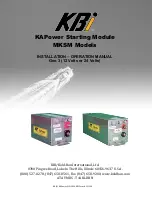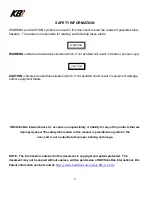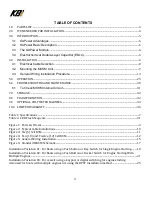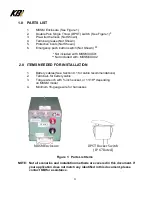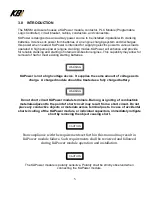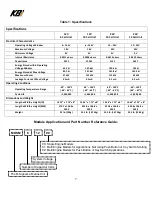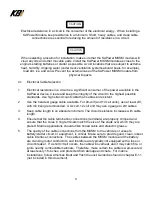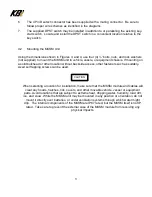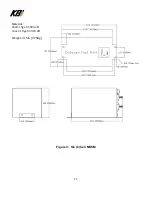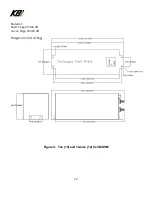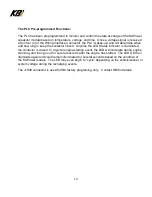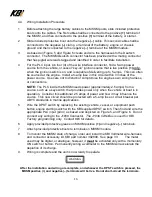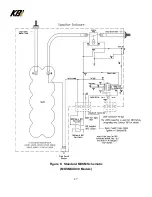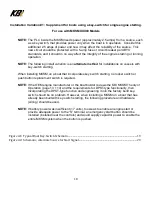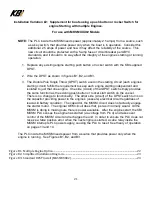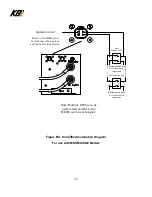
8
Electrical resistance in a circuit is the consumer of the electrical energy. When installing a
KAPower Module, keep resistance to a minimum. Short, heavy cables, and clean cable
connections are essential to reducing the amount of resistance in a circuit.
When selecting a location for installation, make sure that the KAPower MKSM module will
clear any lids and other movable parts. Install the KAPower MKSM module as close to the
engine's starting batteries or starter as possible. Avoid locations that are subject to extreme
heat, humidity, dripping water (under deck ventilation systems aboard boats, for example),
road dirt, ice, and snow. Prevent the external case of the KAPower MKSM module from
physical impacts.
4.1 Electrical Cable Selection
1.
Electrical resistance in a circuit is a significant consumer of the power available in the
KAPower device. Create and keep the integrity of the circuit to the highest possible
standards. Use high strand count cable that is abrasion resistant.
2.
Use the heaviest gauge cable available. For 24-volt (and 10 cell units), use at least 2/0,
with 4/0 being recommended. A six cell, 12-volt unit may use 4 gauge to 2/0 cables.
3.
Keep cable length to an absolute minimum. The circuit resistance increases with cable
length.
4.
Ensure that the cable termination connections (terminals) are properly crimped and
ensure that the holes in ring terminals match the size of the studs over which they are
placed. Marine applications should utilize tinned cable and dielectric grease.
5.
The quality of the cable connections from the MKSM to the vehicle’s or vessel’s
battery/starter circuit, or equipment, is critical. Make sure to provide good, clean, robust
cable interface connections. The cables between the MKSM module and the battery
are cranking motor conductors, and therefore are typically not equipped with a fuse or
circuit breaker. If a short circuit occurs, the cable will overheat, and it may catch fire, or
ignite nearby combustible materials. Therefore, make certain the cable is well-secured,
at least every 18-inches, and protected from damage and chafe. For marine
installations, follow American Boat and Yacht Council Guidelines found in chapter E-11
(not included in this document).
CAUTION
CAUTION

